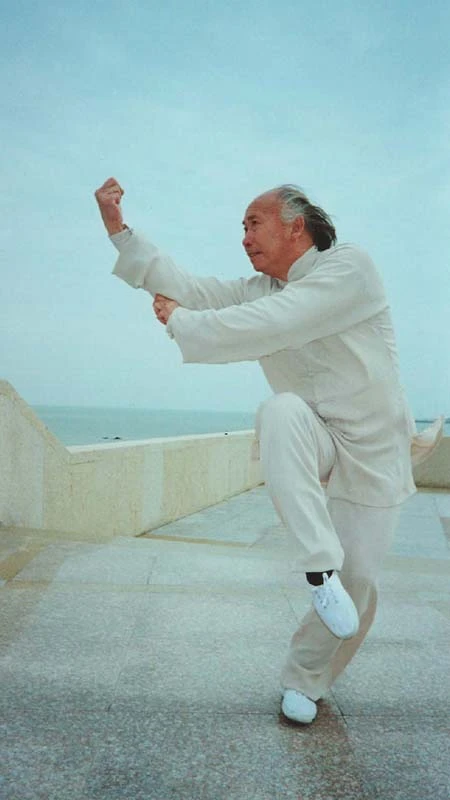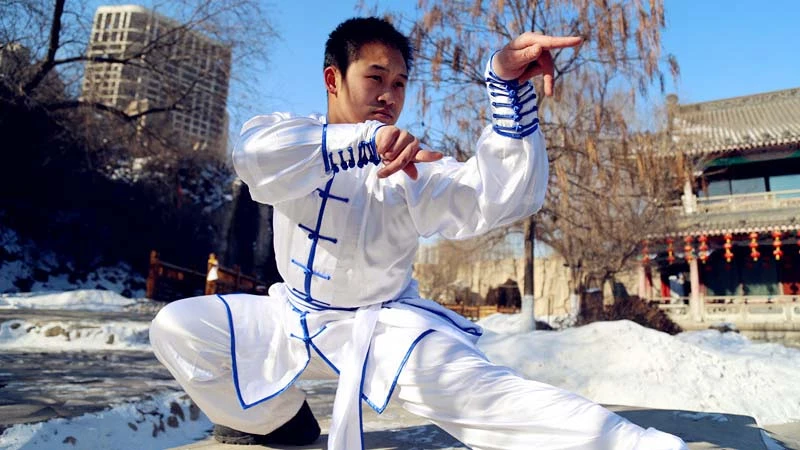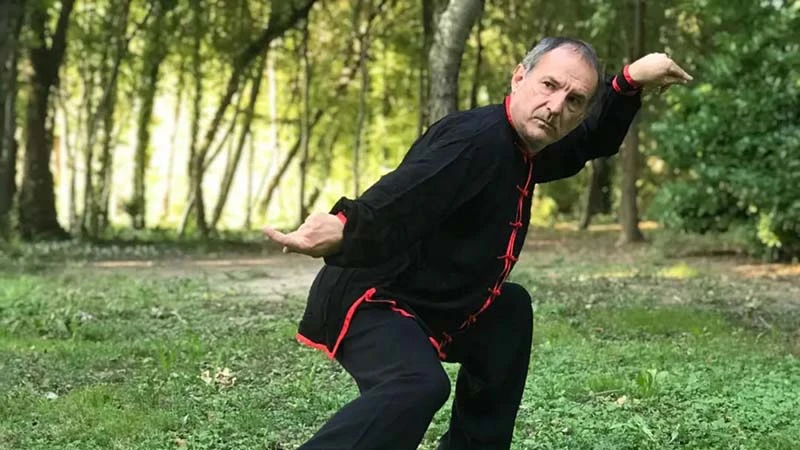Southern Praying Mantis in Huizhou
In the heart of Huizhou, a centuries-old martial art known as Southern Praying Mantis Kung Fu has been preserved and nurtured, despite the challenges of modern times. This unique style of combat, passed down through generations, is a testament to the resilience of traditional Chinese martial arts. Originally from the Shaolin Temple (少林寺) in Fujian during the early Qing dynasty, the art faced a slow decline in Huizhou before being revitalized by its fifth-generation master, Chen Jianming (陈建明). Through his passion and dedication, the Southern Praying Mantis style has once again captured the interest of young practitioners, recently being named an intangible cultural heritage of Huizhou.
Master Chen, at 67 years old, is as energetic and lively as ever, and continues to train students from his home, where he has transformed his modest living room into a martial arts training ground. His story and the art he practices reflect both the physical and spiritual essence of martial arts—an art that’s deeply rooted in tradition, discipline, and respect.

From Training Halls to Living Rooms
Chen Jianming’s martial arts journey began in his early years, when he discovered his love for martial arts. As he grew older, his dedication led him to become the first disciple of his master, Ma Mingsen (马铭森), a third-generation practitioner who had trained in Hong Kong. The Southern Praying Mantis style is renowned for its practical, close-range combat techniques, often described as fast and explosive, mimicking the predatory speed and precision of a praying mantis.
However, maintaining a formal martial arts school proved financially challenging for Chen. Despite his efforts to establish a proper venue for teaching, the high costs of rent forced him to move his training sessions into his own home. "It’s unfortunate," Chen admitted, "but this way, I can still pass on the knowledge, even if it’s from my living room."
Inside this small space, students gather to practice the unique techniques of Southern Praying Mantis. Their training, often rigorous and repetitive, focuses on precise movements that require physical strength, flexibility, and mental fortitude. Basic forms, or "mother fists," are at the core of this style’s teachings, and mastering them is the key to becoming proficient in the art. According to Chen, "The mother fists contain all the foundational techniques of the Southern Praying Mantis style. If you can master these, you are ready to graduate."
Chen’s home, though modest, is filled with martial spirit. His students practice diligently under his watchful eye, honing their skills in footwork, hand techniques, and short-range attacks. In between sessions, he offers corrections, advice, and occasionally demonstrates the techniques himself. Despite the limited space, the training is intense, and even in a small living room, the spirit of this ancient martial art thrives.
The Global Reach of Southern Praying Mantis Kung Fu
Southern Praying Mantis Kung Fu has drawn attention from martial arts enthusiasts worldwide. What started as a local practice in Huizhou has now expanded its influence across continents. Chen Jianming has not only taught local students but also trained disciples from countries such as the United States, the United Kingdom, Australia, and even the Czech Republic.
One of Chen’s more memorable international students, Kai Xin (锴信) from the Czech Republic, exemplifies the growing global interest in Southern Praying Mantis. What impressed him most during his initial meeting with Chen was how such an unassuming master, slender and weighing no more than 60 kilograms, could deliver so much power with just a flick of his wrist. Despite his extensive martial arts experience, Kai Xin was humbled by Chen’s skill and immediately requested to become his disciple.
However, as Chen insists, becoming a disciple of Southern Praying Mantis is no simple matter. "Martial arts is not just about physical strength; it's about patience, humility, and the willingness to learn," he says. Chen initially turned down Kai Xin’s request, as he does with most who ask to join, explaining that discipleship requires a period of observation and testing. Only those who show dedication and moral integrity are welcomed into the fold.
Kai Xin, undeterred, returned the following week for a friendly sparring session. Chen accepted his challenge, and after a few rounds, it was clear that the student still had much to learn. But what impressed Chen most was not Kai Xin's skill level, but his perseverance. After proving his commitment through months of dedicated practice, Kai Xin was finally accepted as a formal disciple. His journey from student to disciple is a testament to the global appeal and rigorous discipline required to master Southern Praying Mantis Kung Fu.
The Unique Spirit of Southern Praying Mantis
What sets Southern Praying Mantis apart from other martial arts styles is its practical application in real combat. The style emphasizes speed, precision, and the use of short, powerful bursts of energy. Chen explains, "This is not a style that focuses on large, elaborate movements. Instead, it’s about efficiency—using the least amount of effort to achieve the greatest impact."
The core philosophy of Southern Praying Mantis is reflected in its techniques. There are no wasted movements; everything serves a purpose. The style's effectiveness lies in its ability to neutralize larger and stronger opponents through the use of quick, sharp attacks and solid defensive maneuvers. Chen describes it as a “four ounces moving a thousand pounds” approach, using leverage, timing, and positioning to overpower an opponent with minimal effort.
In addition to its practical combat applications, Southern Praying Mantis also embodies a rich cultural and philosophical heritage. The discipline required to master its techniques is mirrored in its moral teachings. "We don’t just teach how to fight," says Chen. "We teach respect for family, teachers, and tradition. This is what keeps the art alive, not just the techniques, but the values behind them."



